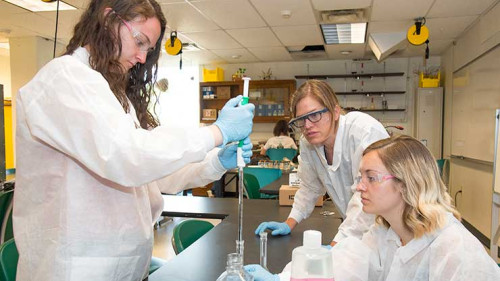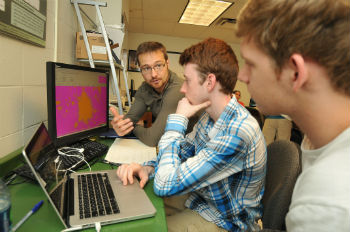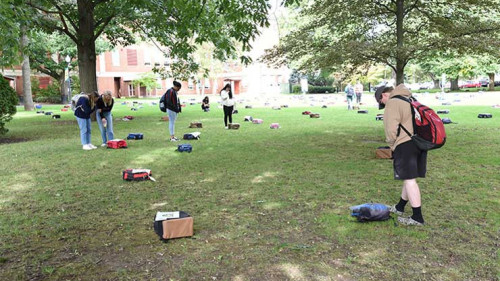

By Mark Adam
Assistant Professor of Physics John Moustakas, Ph.D., is part of a 10-person team of astronomers who are searching for the first galaxies to form in our 14-billion-year-old universe. The team is making use of data from the Hubble Space Telescope, a space-based observatory that is capable of capturing incredibly sharp images of distant galaxies.
Moustakas and his fellow researchers analyze the data from Hubble and try to learn about these galaxies’ characteristics and how they formed.
Moustakas received a $10,034 grant to continue his analysis of the observations from Hubble. He is co-authoring a paper with his team members that will be submitted to a peer-reviewed journal later this spring. Moustakas will spend a month this summer conducting research and then intends on submitting another paper as the lead author.
“I’m excited to be bringing this research to Siena and giving students the opportunity to be a part of this,” said Moustakas, who has been doing this kind of work throughout his career. Moustakas has enlisted Ben Schiher, a sophomore from Burnt Hills-Ballston Lake High School, this semester and plans to involve at least one Siena student during the summer through the College’s Summer Scholars program.
Hubble’s Frontier Fields initiative will observe six different galaxy clusters over a three-year span. Galaxy clusters serve as cosmic magnifying glasses in space, enabling astronomers to see faint galaxies billions of light years away. So far, researchers are halfway through the first galaxy cluster named Pandora’s Cluster, and Moustakas said that they already have results.
“We are making some very interesting discoveries, some of which we're still trying to understand, but which highlight the tremendous potential of the Frontier Fields initiative,” Moustakas said. He calls this project “Hubble’s primary commitment” over the next few years.
Moustakas’ team is made up of researchers from The Johns Hopkins University, the California Institute of Technology, Carnegie Observatories, Pontifical Catholic University of Chile and Siena College. There are a number of other teams around the world competing with them over this research.

